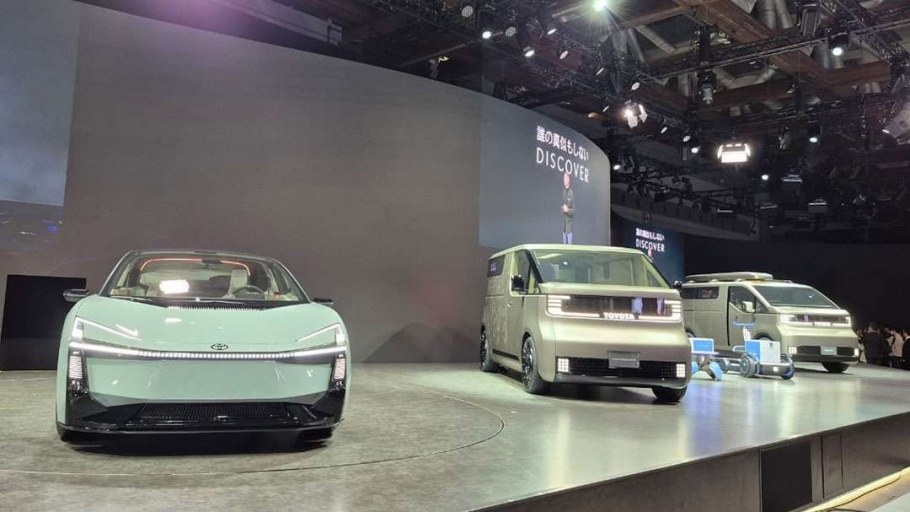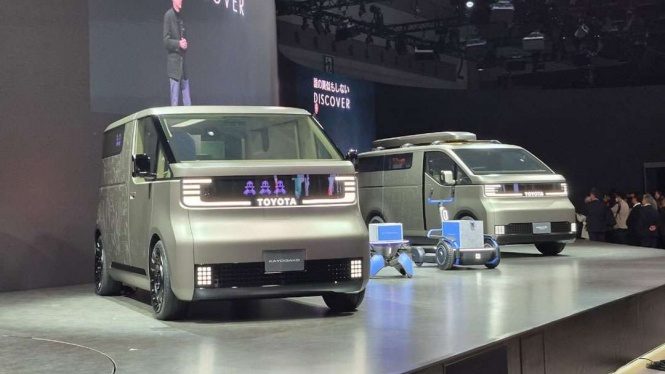Hybrid Car Wholesales November 2025, Fronx Hybrid Increased Rapidly
17 December 2025, 18:00 WIB
Toyota will use the Japan Mobility Show 2025 to showcase their diverse future mobility strategies.

KatadataOTO – Toyota was present at the Japan Mobility Show (JMS) 2025 at Tokyo Big Sight, Japan, from October 29 to November 9, 2025. At this event, they once again demonstrated their commitment to developing the Multi-Pathway Approach strategy they have been implementing.
With this strategy, Toyota can provide mobility solutions, adapting to the automotive landscape and the mobility needs of the community. The Japanese company also emphasized that their goal is to reduce CO2 levels massively and quickly.
To achieve this, all technologies can coexist and be scaled up to accelerate carbon neutrality. Therefore, they will continue to use the Multi-Pathway Strategy.
This step gives them the freedom to use environmentally friendly technologies in the future. Ranging from vehicles like ICE (Internal Combustion Engine) with improved efficiency, Hybrid Electric Vehicle (HEV), Plug-in Hybrid Electric Vehicle (PHEV), Fuel Cell Electric Vehicle (FCEV) to Battery Electric Vehicle (BEV).

Meanwhile in Indonesia, the Net Zero Emission (NZE) 2060 policy contains a target to achieve a balance between greenhouse gas (GHG) emissions released into the atmosphere and the amount of GHG reabsorbed by the year 2060.
To achieve this, Toyota has the Toyota Environmental Challenge 2050 initiative. Within it, they have a target to reduce emissions from vehicles produced in that year by up to 90 percent compared to emissions in 2010.
Toyota is also determined to become the best company by adapting to the unique needs of the community, supply chain resilience, and a country's energy resource vision. The manufacturer has played an important role in the development of the automotive industry in the Asian region, including Indonesia

This strategy emphasizes providing the best products and services that meet the mobility needs and demands of the community in each country. One example is the global IMV (Innovative International Multi-Purpose Vehicle) platform.
This platform sharing supports various vehicles to meet diverse mobility needs in emerging markets, thereby achieving economies of scale that allow for affordability and access. In Asia, the Toyota cars that use it are the Fortuner, Innova, Hilux, and the newest Hilux Rangga.
Related Articles
17 December 2025, 18:00 WIB
15 December 2025, 10:00 WIB
10 December 2025, 13:00 WIB
10 December 2025, 10:00 WIB
08 December 2025, 18:00 WIB
Latest
19 December 2025, 19:00 WIB
The quality of the Yamaha Xmax has been proven, after Anshar used it to travel 27,000 kilometers from Indonesia.
19 December 2025, 17:00 WIB
The VinFast VF e34 is the most imported model into the Indonesian market, followed by the VF 5 and VF 3 electric vehicles.
19 December 2025, 16:00 WIB
Motul oil producer achieved many accomplishments this year, providing additional motivation for 2026.
19 December 2025, 13:36 WIB
KPK has just arrested Ade Kuswara Kunang along with several other people in a sting operation on Thursday (18/12).
19 December 2025, 12:00 WIB
According to KatadataOTO's monitoring, the prices of LCGC cars such as Honda Brio Satya and Toyota Agya remained stable.
19 December 2025, 11:00 WIB
Honda will halt vehicle production in Japan and China due to semiconductor chip shortages.
19 December 2025, 10:00 WIB
Consumers can still purchase the Jetour T2 at a special price of approximately Rp 568 million until the 1,000-unit quota is fulfilled.